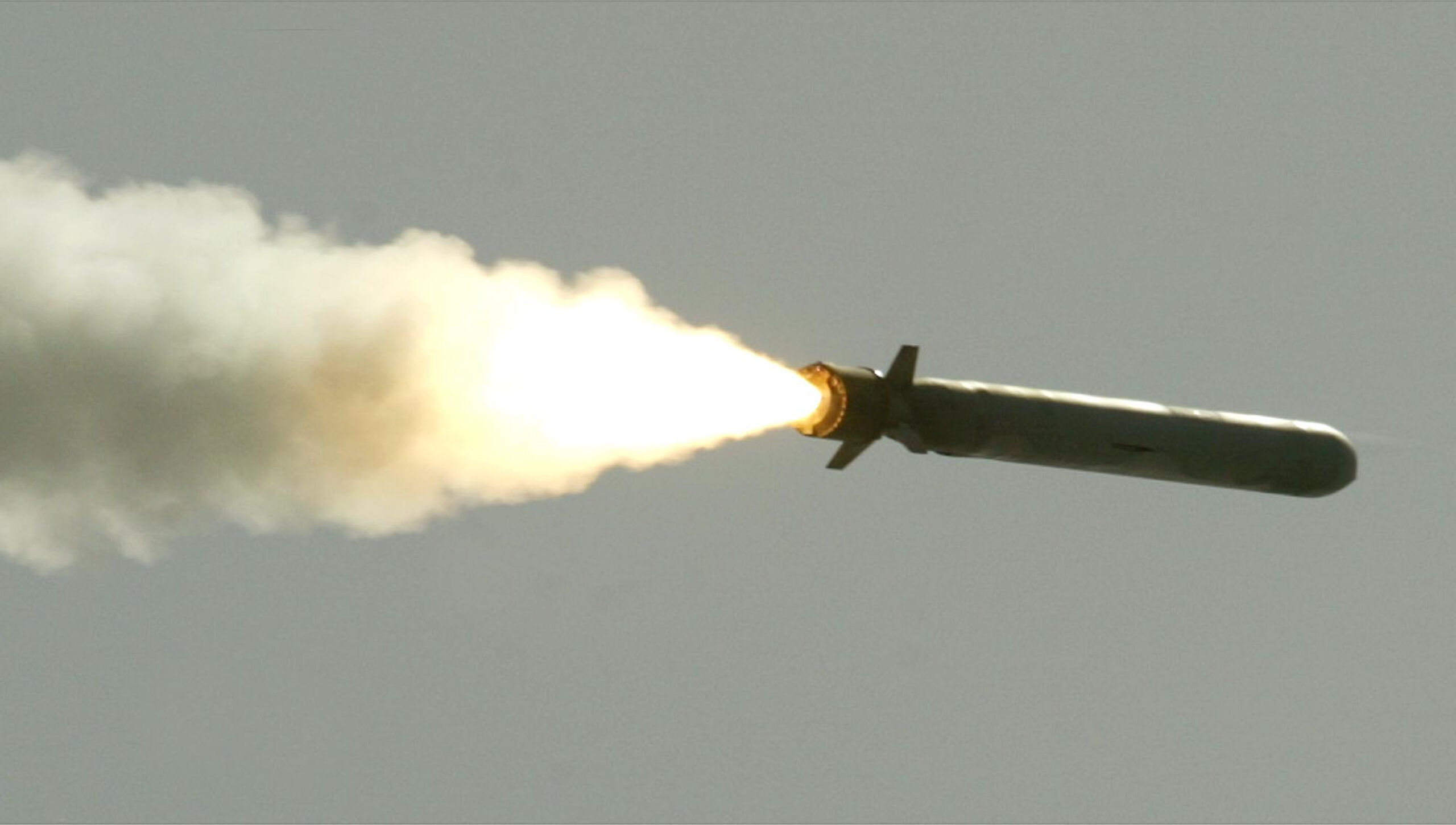

The Navy is developing a new long-range anti-ship missile — dubbed the Maritime Strike Tomahawk — that would allow Marine units based on Japanese islands to sink Chinese ships taking part in an invasion of Taiwan.
Right now, the Marine Corps’ Navy Marine Expeditionary Ship Interdiction System, or NMESIS, uses Naval Strike Missiles, which have a range of up to 115 miles.
A recent war game conducted by the Center for Strategic and International Studies think tank showed that for NMESIS to be effective during a Chinese invasion of Taiwan, the system would have to be on the island before hostiles commence, said retired Marine Col. Mark Cancian, a senior adviser with the CSIS International Security Program.
Moreover, the diplomatic hurdles involved with deploying a Marine unit equipped with NMESIS to Taiwan before such an invasion are immense, Cancian told Task & Purpose. Because of the range and quantity of Chinese weapons, it is not likely that the Marines could deploy NMESIS to Taiwan after an invasion had started.
Subscribe to Task & Purpose Today. Get the latest military news and culture in your inbox daily.
Tomahawk missiles, however, have a range of up to 1,000 miles, according to Raytheon Missile & Defense, the company that makes the cruise missiles. The Maritime Strike Tomahawk, or MST, is intended to strike moving targets at sea.

The next integration of the Tomahawks, Block V, will include the ability to strike ships, said Lee Willett, a naval analyst. The Navy expects to receive its first Maritime Strike Tomahawks in late 2024.
The Marine Corps has notified the Navy that it would like to buy Maritime Strike Tomahawks and has submitted a request for funding to do so, said Willett, who writes for Janes, a defense publication.
Maritime Strike Tomahawks would give the Marine Corps a long-range strike capability, allowing it to protect forward-deployed Marine units, which would be able to operate within range of an enemy’s long-range defenses, Willett told Task & Purpose.
The Marines activated their first Long Range Missile battery earlier this year and the Corps plans to ultimately have a battalion of three such batteries operational by 2030, said Cathy Close, a spokeswoman for Marine Corps Combat Development and Integration.
The Department of the Navy’s latest proposed budget plans on buying 34 land attack Tomahawks for the Marine Corps next fiscal year. The Marines were allotted 13 Tomahawks this fiscal year and 48 Tomahawks in fiscal 2022.

“Based on the Navy’s development schedule, procurement [of Maritime Strike Tomahawks] may begin as early as the late 2020s,” Close told Task & Purpose. “The Marine Corps does not have any Maritime Strike Tomahawks now as MST is a developmental program in the Navy.”
The Marine Corps’ Expeditionary Advanced Base Operations concept, or EABO, calls for putting small numbers of Marines ashore on temporary locations, such as remote islands in the Pacific, from which they could target enemy ships.
“Conceptually, MST broadens the Tomahawk target set to include moving targets such as ships, in which case a geographic combatant commander could employ ground-launched MSTs as part of a Naval sea control or sea denial campaign,” Close said. “One purpose and value of EABO is to enable distributed long-range fires, such as those provided by Tomahawk missiles, in support of the Joint Force.”
If the Marines had Maritime Strike Tomahawks, they would be able to sink Chinese ships from bases much further away from Taiwan, said Stacie Pettyjohn, director of the defense program at the Center for a New American Studies think tank in Washington, D.C.
“Unlike NSM [Naval Strike Missiles], MST would provide the Marines with an anti-ship weapon with enough range to reach parts of the Taiwan strait from the Southern Ryukyus and Kyushu [Japan],” Pettyjohn told Task & Purpose. “Theoretically then the Marine Littoral Regiment could try to sink parts of the invasion fleet crossing the strait in addition to conducting sea denial operations in the East China Sea and northern Philippine Sea.”

But targeting Chinese invasion ships from Japanese islands would be difficult, and the subsonic Tomahawk missiles may not be able to get through Chinese air defenses to reach their targets, Pettyjohn said. The Marines are also not expected to have many Tomahawks by fiscal 2026, and top defense officials believe China could try to invade Taiwan by 2027.
The Marines may find that Maritime Strike Tomahawks would be better used to defend Japanese waters and possibly prevent Chinese ships from from passing through the Miyako Strait, a key waterway that the People’s Liberation Army Navy would need to transit in order to leave the “first island chain,” which includes Japan and Taiwan, Pettyjohn said.
Maritime Strike Tomahawks could also become an effective weapon to defend Marine bases, said Navy strategy expert Steven Wills.
“The only challenge I see is that Tomahawk missile production would need to substantially ramp up in order to supply both of the maritime services as well as the Air Force,” said Wills, a retired Navy lieutenant commander who is now with CNA, a federally funded research and development center.
During World War II, Marine base defense battalions used 5-inch guns from old battleships on Wake Island and Midway Island during World War II, Wills told Task & Purpose.
“Today’s Marine Littoral Regiment, armed with antiship and anti-air weapons is the lineal descendent of the World War II base defense battalions,” Wills told Task & Purpose. “Arming today’s Marines with cruise missiles to attack ships is like giving the 1941 Marines old battleship weapons, only with much improved accuracy and firepower.”
The latest on Task & Purpose
- Air Force said AI drone killed its human operator in a simulation
- The Army says it’s made ‘significant improvements’ to its troubled new infantry squad vehicle
- What we know about China’s hacking of Navy systems
- Taliban moving captured US military vehicles and Soviet tanks to Iranian border
- Five juveniles arrested for attack on Marines caught on video